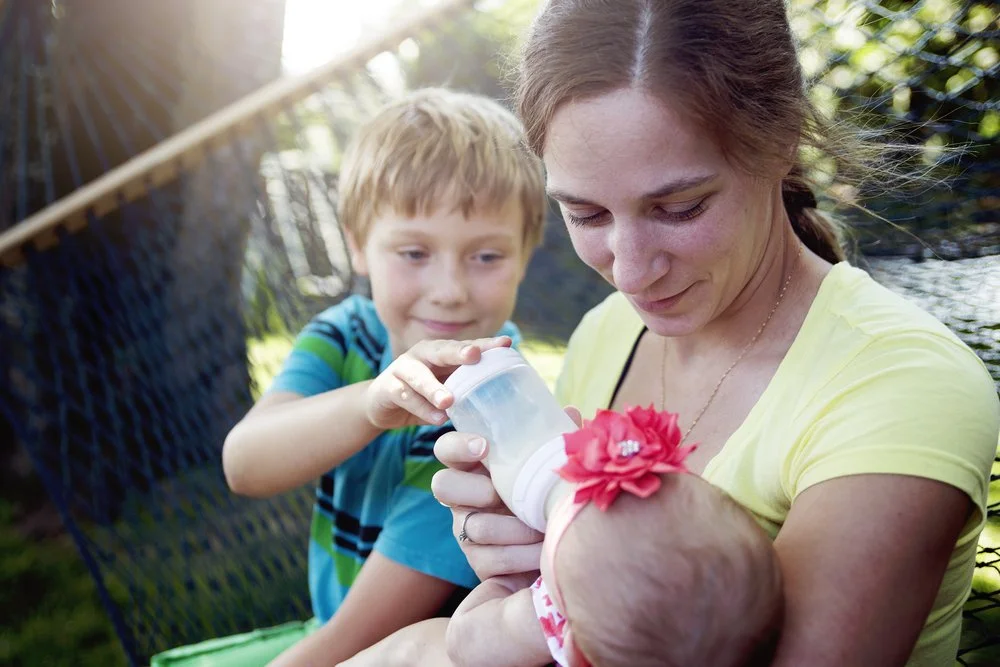New Potential Treatment Options for Women With Perinatal Mood and Anxiety Disorders
Lifestyle changes and magnetic therapy are among the promising alternatives and complements to antidepressants
For women with postpartum depression and anxiety, antidepressant medication combined with psychotherapy is often the first treatment doctors recommend because these are very effective. But because this regimen is not always an option for women, clinicians are pursuing new treatments for perinatal mood and anxiety disorders.
Estrogen therapy and transcranial magnetic stimulation (TMS) are two of the most promising, according to Deborah Kim, MD, assistant professor of psychiatry at the Hospital of the University of Pennsylvania. Both are currently being used to treat women with rare cases of PPD that do not respond to antidepressants. Lifestyle interventions – including exercise, sleep and light therapy – could also be helpful additional or standalone treatments.
Although doctors currently prescribe estrogen therapy only for women who have already tried two or three different antidepressants unsuccessfully, research is ongoing to test estrogen as a first-line treatment for PPD. Wearing a patch on the skin to supplement estrogen could help because levels of this hormone plummet after childbirth, and many experts think this drop contributes to PPD. Two small studies suggest that estrogen can reduce severe depression in new mothers.
However, this treatment is not without risks: Estrogen therapy has been linked to an increased risk of blood clots and lower milk production. The hormone may also get into breast milk, although it is unclear whether this would have any effect on child development or behavior.
Transcranial magnetic stimulation was approved by the U.S. Food and Drug Administration in 2008 to treat general depression, or depression unrelated to the perinatal period. In this therapy, a device painlessly delivers magnetic pulses through the skull to change the activity in the brain.
A small study in 2012 suggested that 20 sessions of TMS could ease symptoms of PPD. But so far doctors only use TMS to treat women who have PPD that cannot be managed with antidepressants, says Kim, who conducts research on TMS as a treatment for depression during pregnancy.
A major drawback of TMS is that it is a big time commitment, says Kimberly Yonkers, MD, professor of psychiatry at Yale School of Medicine. In the 2012 study, participants had a TMS session lasting several minutes in a clinical setting every weekday for a month. However, researchers are developing at-home TMS devices that could make this a more realistic treatment option, Yonkers says.
These alternatives are rarely prescribed because so far using estrogen therapy or TMS has been restricted to women who have not benefited from trying several different types of antidepressants. “That would be pretty unusual for a woman not to respond to three antidepressants,” Yonkers says.
Kim estimates that about 40 percent of women have a reduction in their PPD symptoms with the first antidepressant they try. They work “incredibly well,” she says. Antidepressants seem to be more effective at treating PPD than general depression.
Nevertheless, some women do run out of options, even after trying multiple antidepressants, and experts say the lack of treatment options for these women needs to be addressed.
Effective alternative treatments could also appeal to women who are concerned about taking antidepressants while breastfeeding, although studies suggest that the benefits of breastfeeding outweigh the risks of exposure to antidepressants, which reach breast milk only in very low levels. Two commonly prescribed antidepressants (Zoloft and Paxil) pass into breast milk at such low concentrations that they are undetectable in an infant's bloodstream.
The role and effectiveness of psychotherapy for PPD
Psychotherapy plays an important role in recovering from postpartum depression and anxiety, when used either alone (for mild cases) or in combination with antidepressants. One analysis reviewed studies of cognitive behavioral therapy (CBT), a therapy in which people discuss their thoughts, feelings, and behaviors, and found that it seemed to help women with a range in PPD severity. A recent study found that a six-week CBT group program tailored to women with anxiety during pregnancy or the postpartum period reduced their symptoms.
CBT is not the only type of psychotherapy that can benefit women who have PPD and PPA, says Ruta Nonacs, MD, PhD, psychiatrist at the Massachusetts General Hospital Center for Women's Mental Health. For example, interpersonal therapy, which involves talking about and trying to improve relationships with others, has also been associated with a reduction in postpartum depressive symptoms. The important thing is to find a therapist or group practice with experience in treating depression and anxiety in the perinatal period, Nonacs says.
Lifestyle changes that can make an impact
Lifestyle interventions can also contribute to recovery, especially for women who have less debilitating forms of PPD and PPA. Nonacs recommends that women prioritize sleep. “Especially with anxiety, if sleep improves women can do a lot better,” Nonacs says.
Women may be able to maximize the benefits of sleep by using light therapy for about a half hour around the time they wake up. A small study found that sitting in front of a bright light box for 30 minutes every day for six weeks helped lift women out of PPD.
Just like other treatments proven to help people with general depression, such as antidepressants and transcranial magnetic stimulation, exercise could benefit women with PPD and PPA. Another small study found that women with PPD who did about two hours of aerobic exercise a week for three months felt less tired than women who did not receive an exercise intervention.
As much as lifestyle interventions and psychotherapy can help, some women have anxiety and depressive symptoms so severe they need medication to function and improve. Kim continues to recommend antidepressants to women at least as a first-line treatment, although she hopes that other treatments will become available soon.












